《 Ramie / China Grass 》
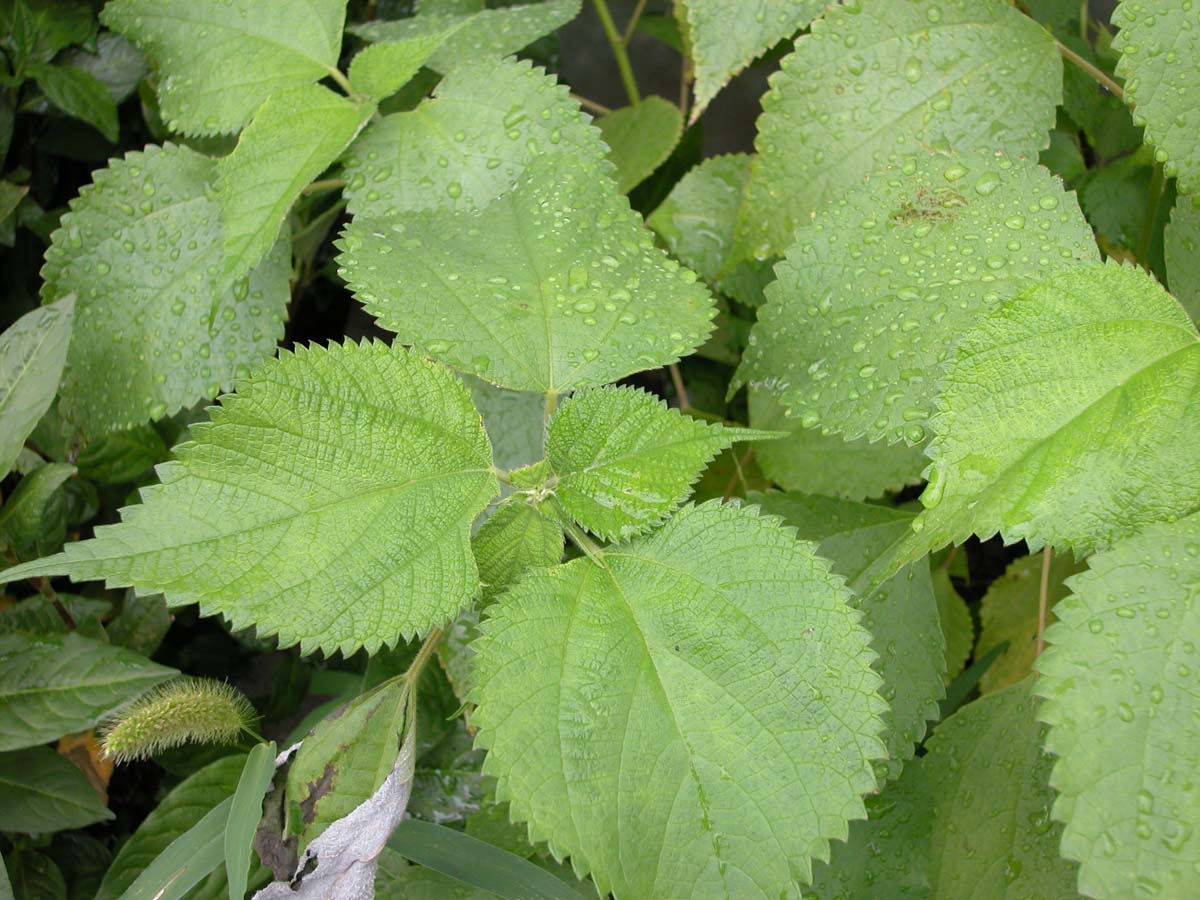
〔 Urticaceae family 〕
Binomial name: Boehmeria nivea
Producing area: Japan, China, Korea
Section used: Bast fiber
Ply-joining method: Twisting
According to illustrated reference books, the Japanese name for Ramie, “Karamushi” is said to have gotten its name because the fiber must be separated by the “stem” (kara) being “steamed” (mushi).
In reality, the fiber does not need to be steamed to be separated. The more likely theory would be that the “Kara” originally meant “Korea”, and the term for “Ramie” was “Moshi”, the word later transforming into “Karamushi”.
Most of AONI’s thread and cloth is made out of ramie from various places of China.

Aoso: Fiber collected from the stem of the ramie.
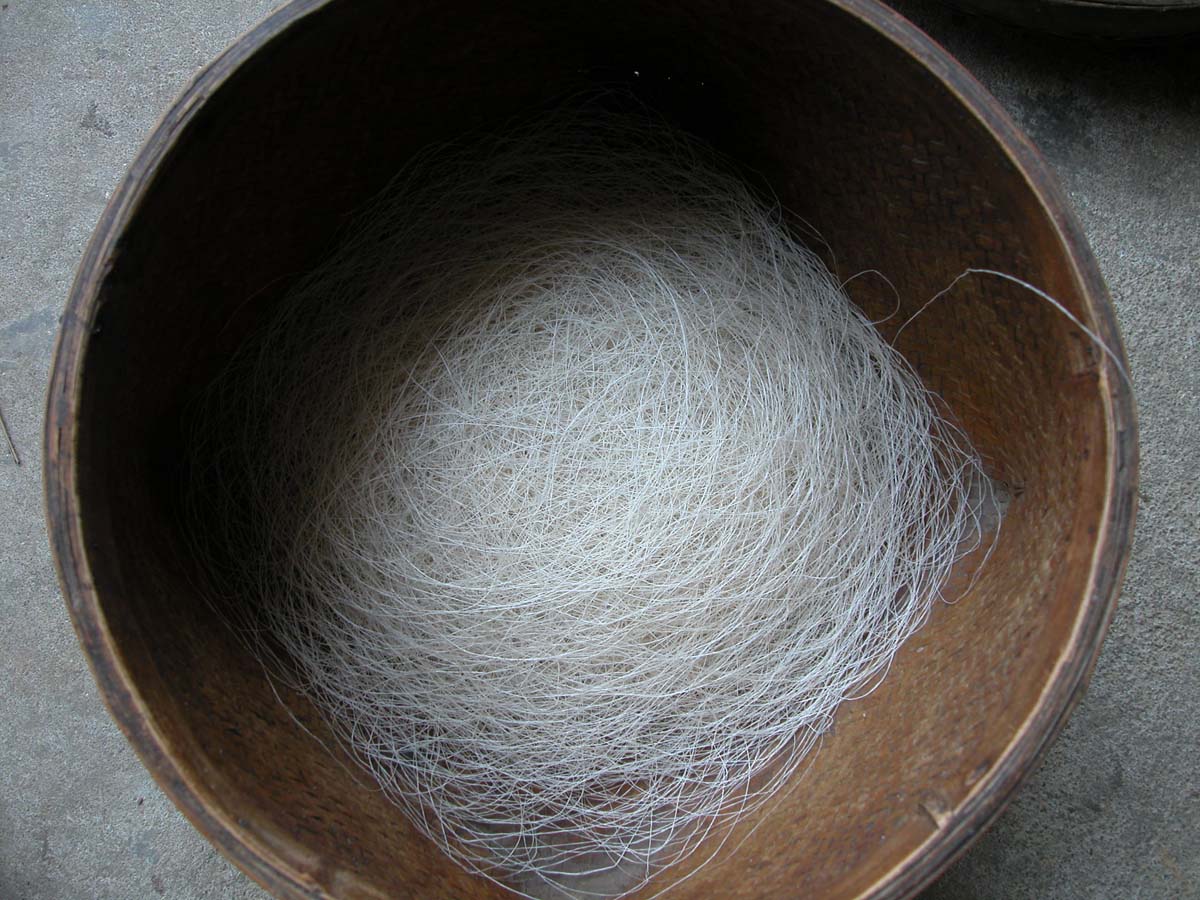
Freshly made ramie thread in an Oboke (wooden tub to keep finished ramie thread).
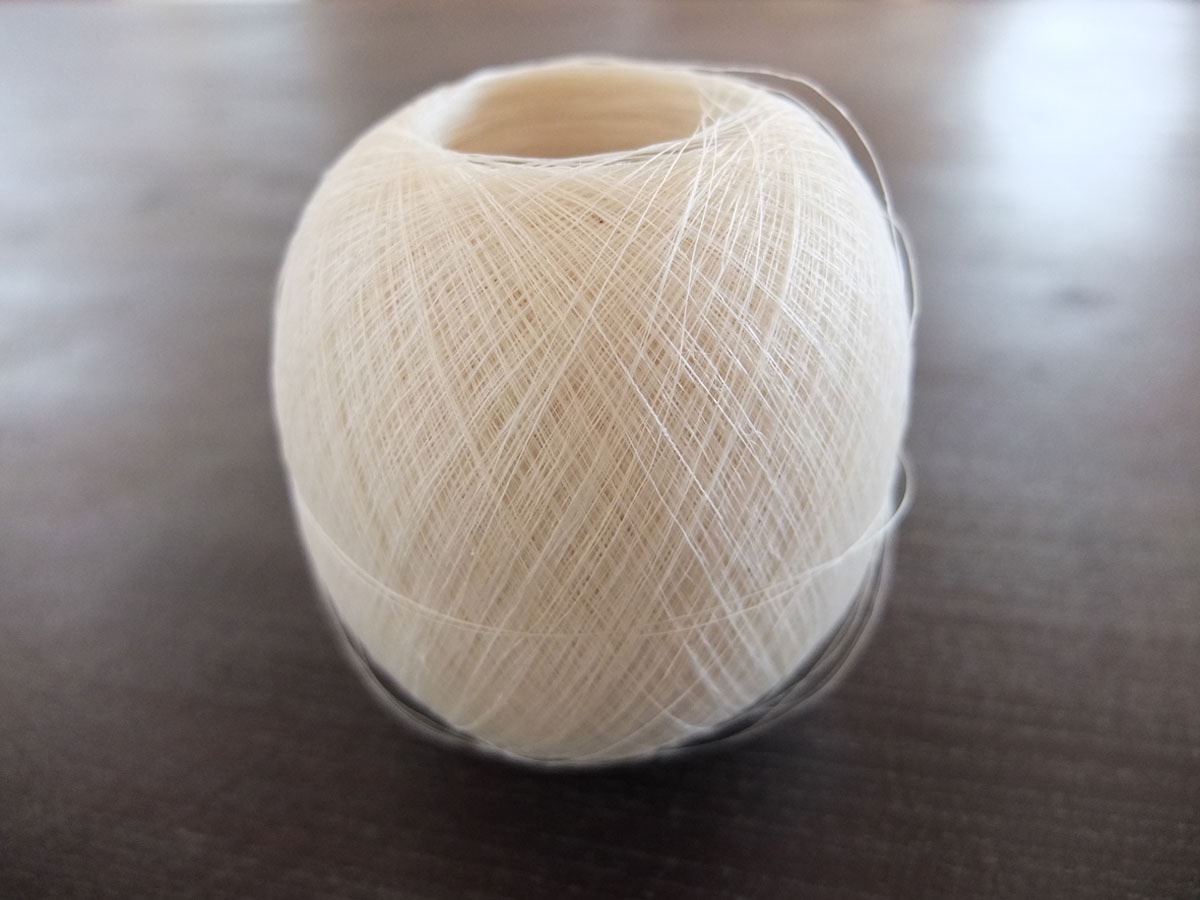
Ramie thread all wound up. When taking out the thread, always start from the beginning of the inside.
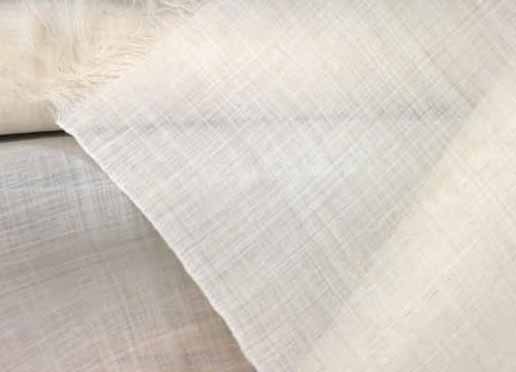
AONI Jofu
《 Hemp 》
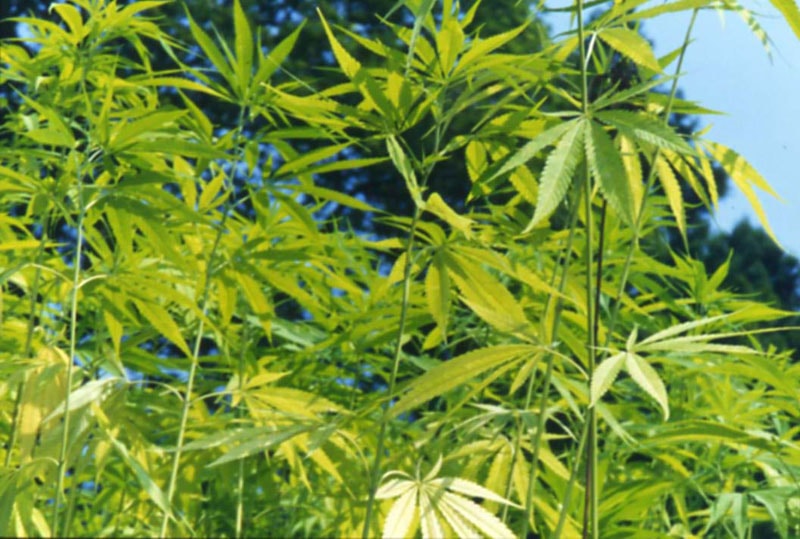
〔 Cannabaceae family 〕
Binomial name: Cannabis sativa
Producing area: Shandong, China
Section used: Bast fiber
Ply-joining method: Twisting
There are in fact various different types of hemp. This hemp, is solely used for the fiber. Hemp is one of the first plants our species has cultivated in order to collect the fiber out of. They are an annual plant, which grows up to 3m in approximately 120 days.
In Japan, the seeds are sowed around the “Haru-Higan” (Spring equinox) week, harvested during the dog days of Summer, and the “Obiki” (scraping off the outer bark) process will be done during the “Aki-Higan” (Autumn equinox) week. It is a cultivation method which accords to nature’s cycle.
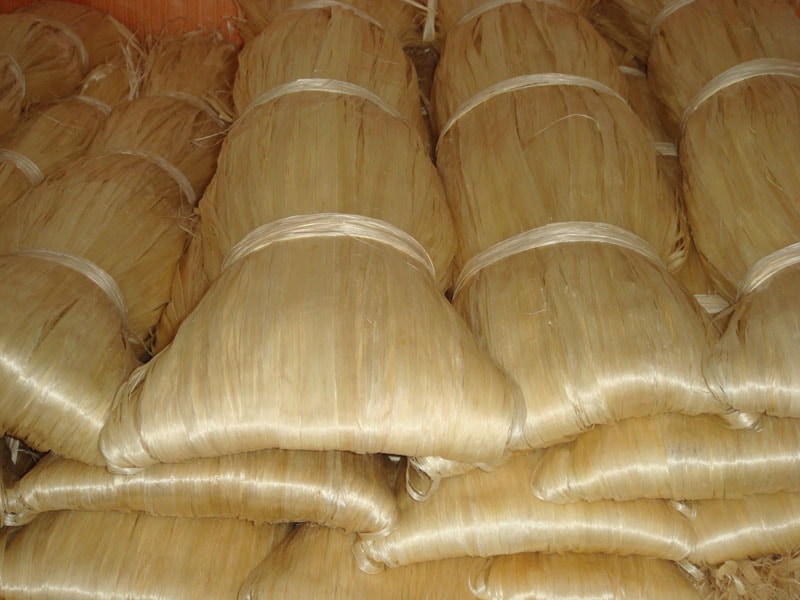
Asao: The fiber taken out from the stem of the hemp
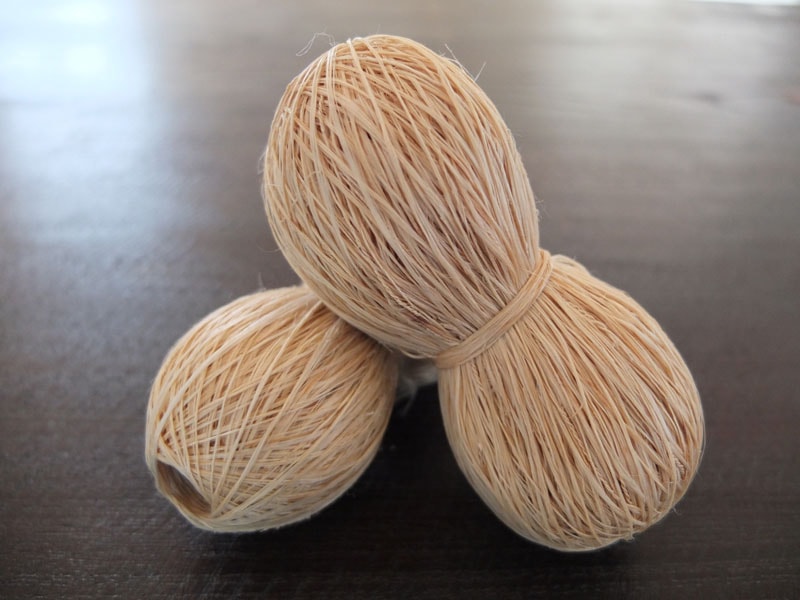
Hemp thread
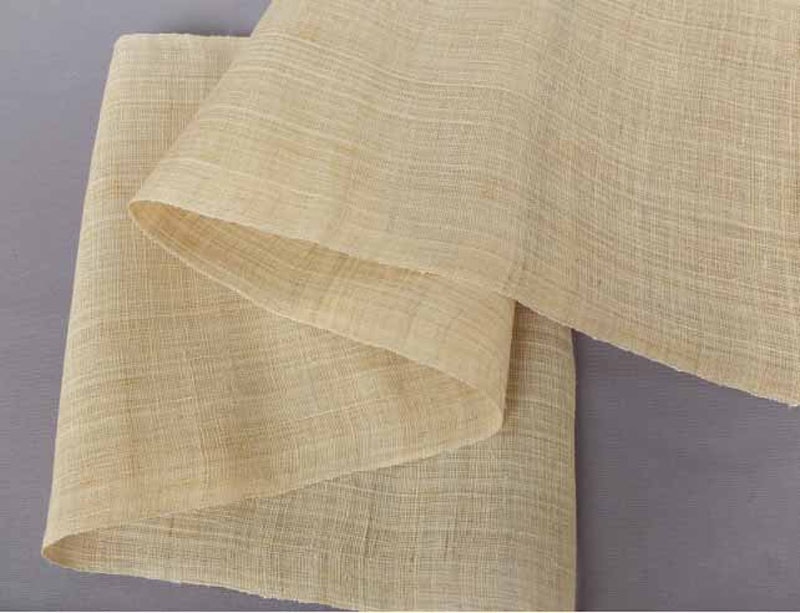
Hemp cloth
《 Green Hemp 》
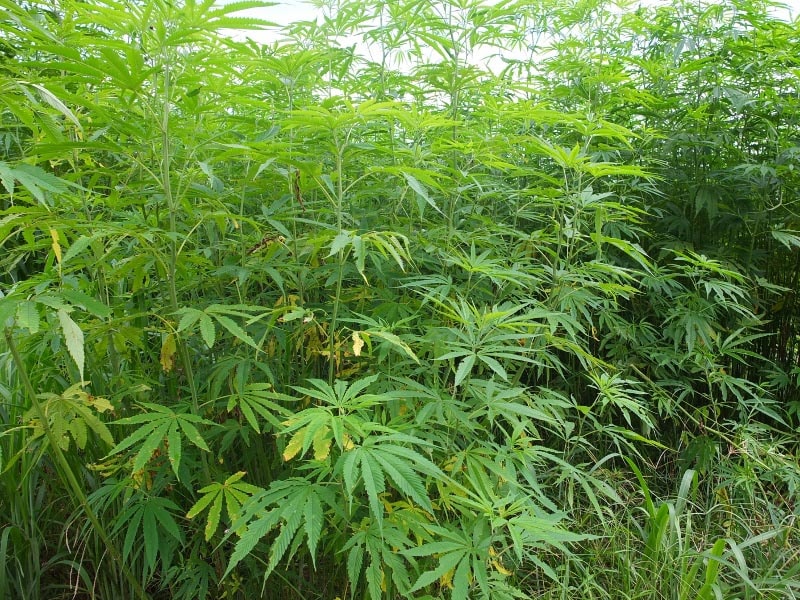
〔 Cannabaceae family 〕
Binomial name: Cannabis sativa
Producing area: China
Section used: Bast fiber
Ply-joining method: Twistin
This hemp is used by the Hmong people to make their traditional clothing.
The thread is made with the outer bark left on, hence the green color.
After the thread is boiling with lye, it will then be weaved into a cloth.
The green color lasts for a relatively long while, but there will still be change over the years.
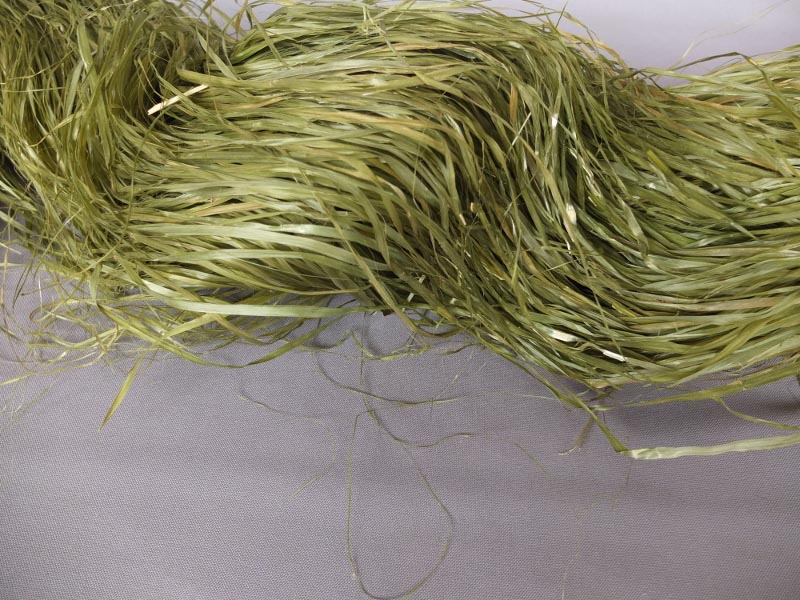
The fiber taken out from the stem. The outer bark is on.
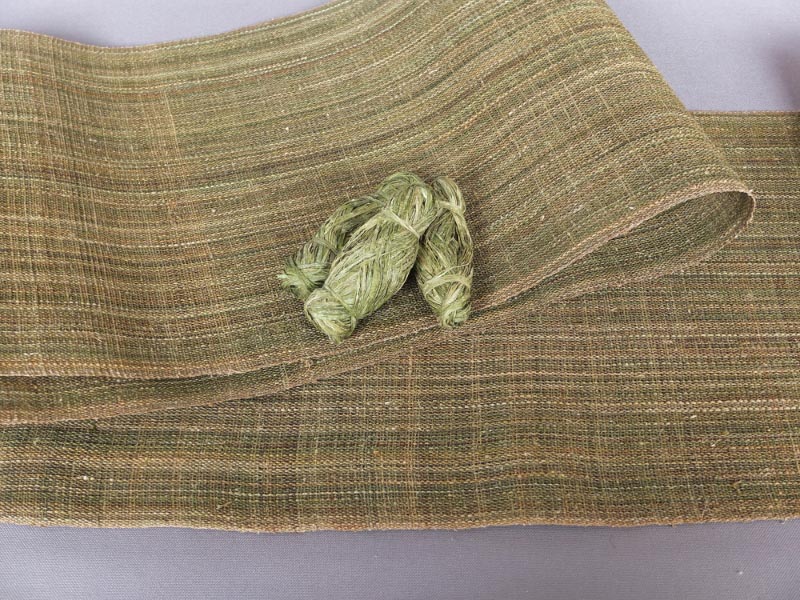
Green hemp thread and cloth
《 Piña 》
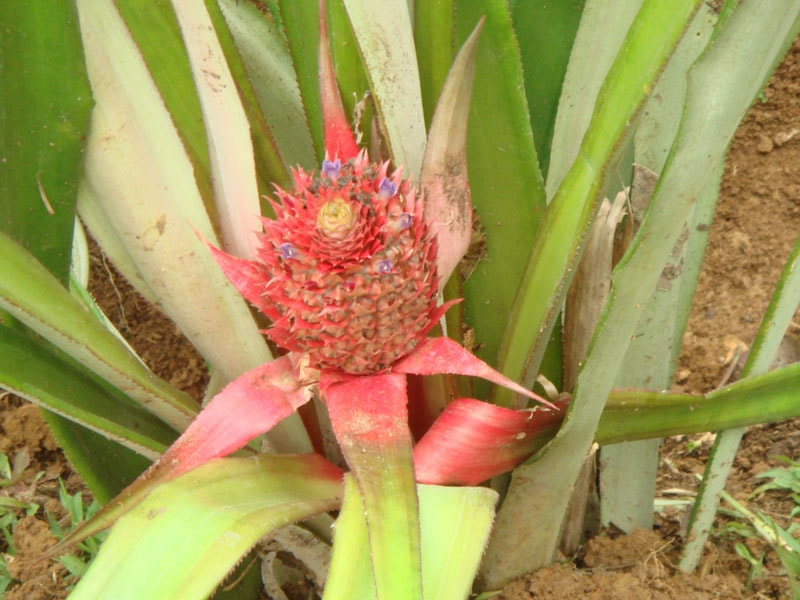
〔 Bromeliaceae family 〕
Binomial name: Annas comosus
Producing area: Philippines
Section used: Leaf
Ply-joining method: Hand-knotting
A fiber coming from the leaf of a type of pineapple used for makings; called a “Red Spanish”.
It has a beautiful luster, and out of all the “Asa”, it is the thinnest.
There are slightly rough fibers on the outside of the leaf, and there are soft and thin fibers on the inside.
The inner fiber is used for the warp.
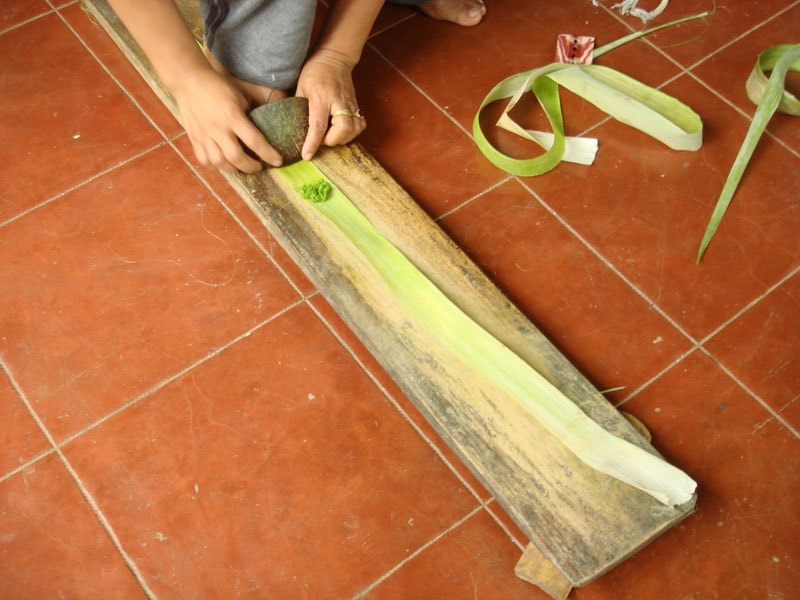
The fiber is taken from the stem. The outer fiber is chipped off using a broken ceramic plate,
and for the inner fiber a coconut shell which has a softer touch is used.
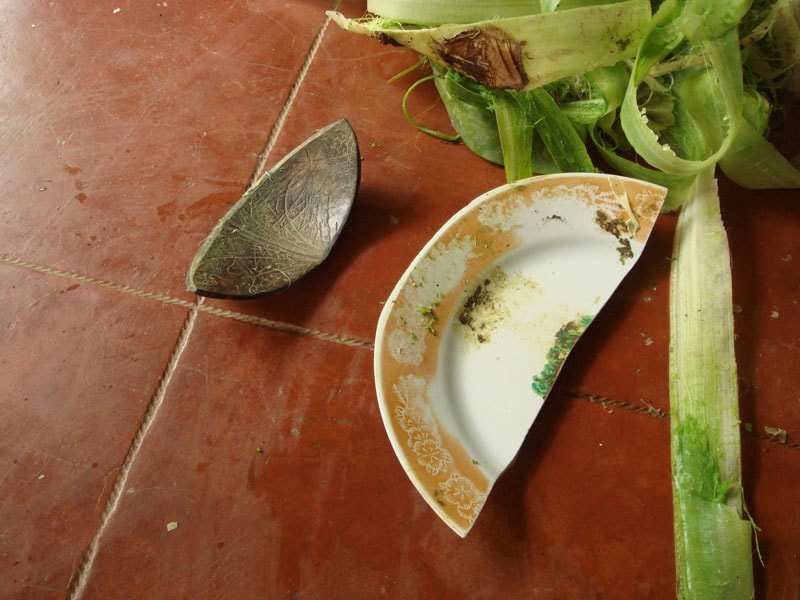
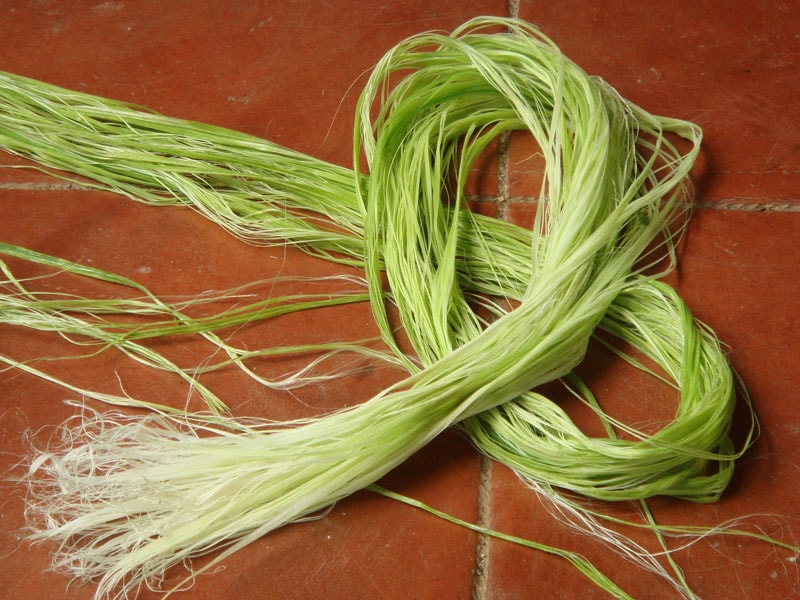
Extracted fiber
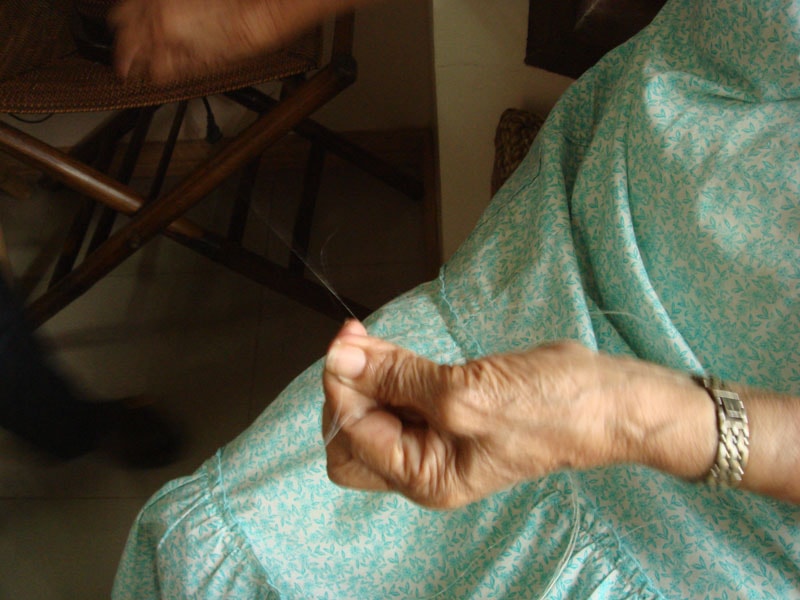
Ply-joining (Hand-knotting): The fibers are tied together in a weaver’s knot. The roots joining the roots while the ends join with the ends.
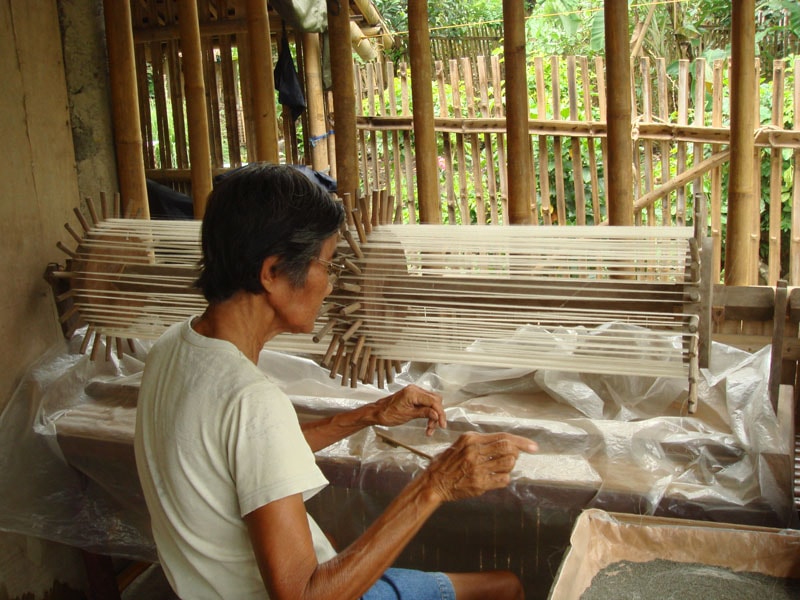
Warping: Preparing to weave
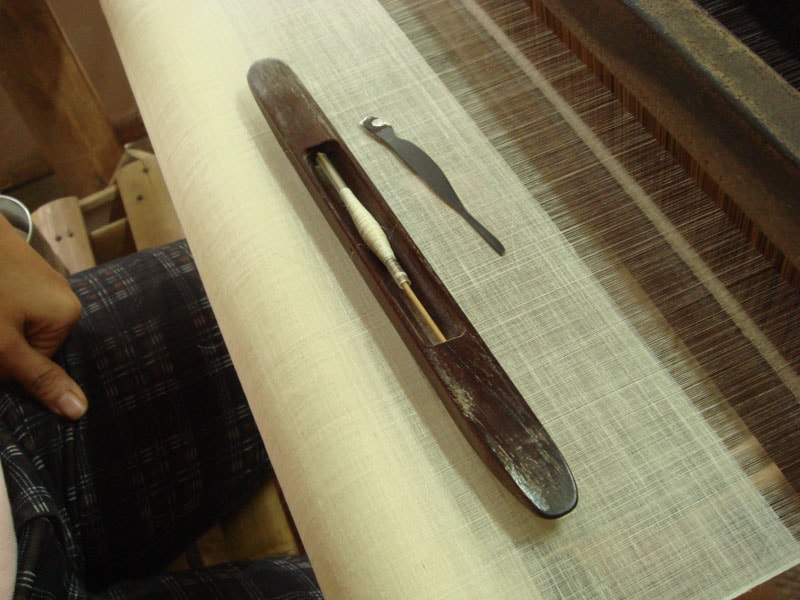
Weaving using a treadle loom
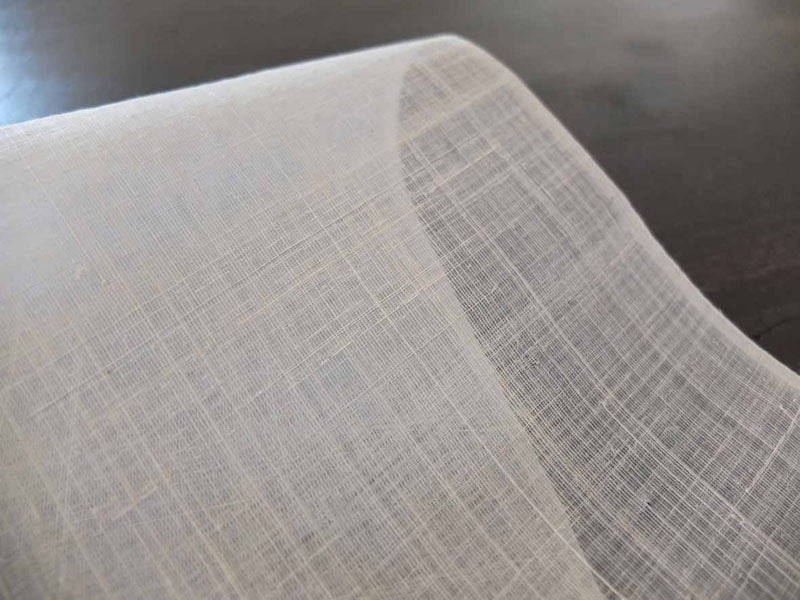
Finished piña cloth
《 Basho 》
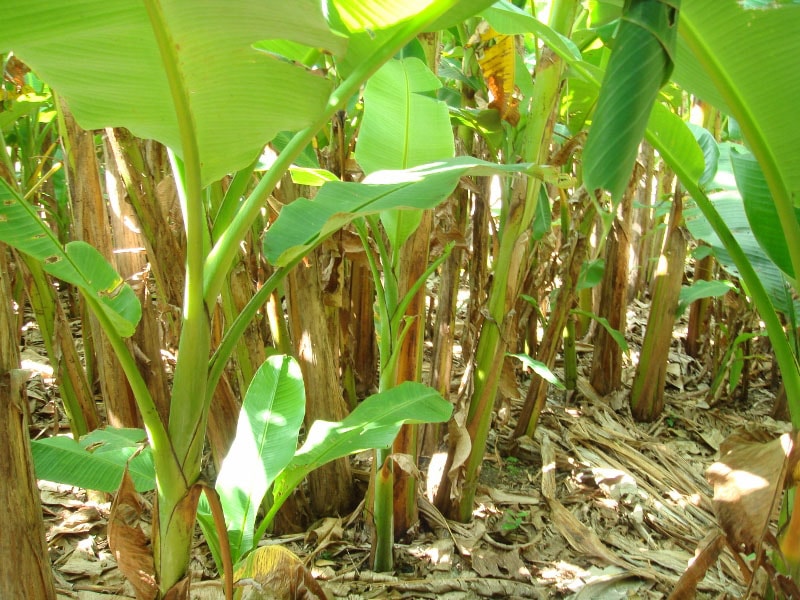
〔 Musaceae family 〕
Binomial name: Musa balbisiana
Producing area: Okinawa, Japan
Section used: Ocrea (the stem-like sections visible are pseudostems, not actual stems.)
Ply-joining method: Hand-knotting
There are three different types of basho. One for making thread, one for eating the fruit, and an ornamental one.
This is a thread for Kimono that uses the fiber close to the core of the basho’s leaf sheath.
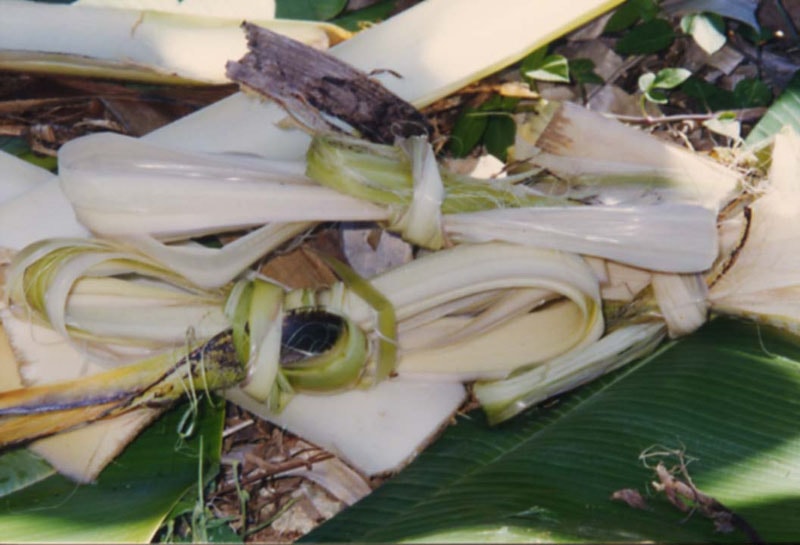
The leaf sheath stripped off from the basho
Basho fiber
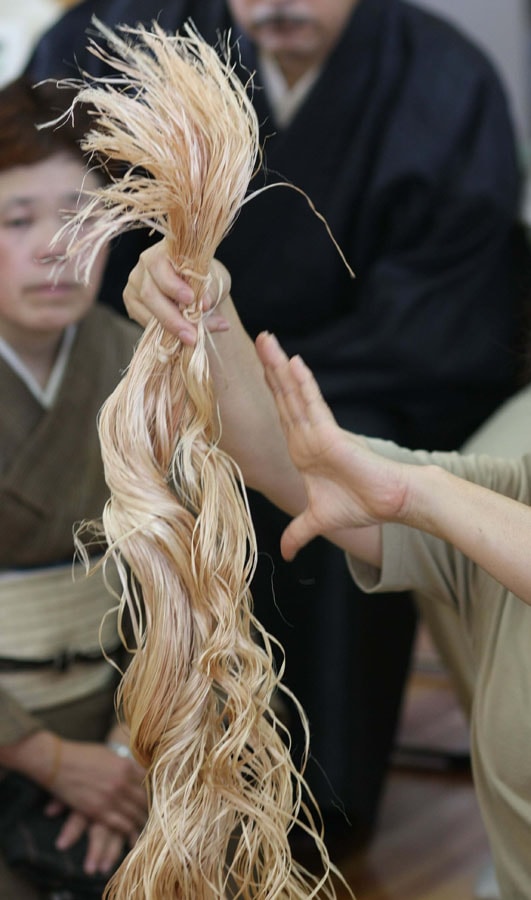
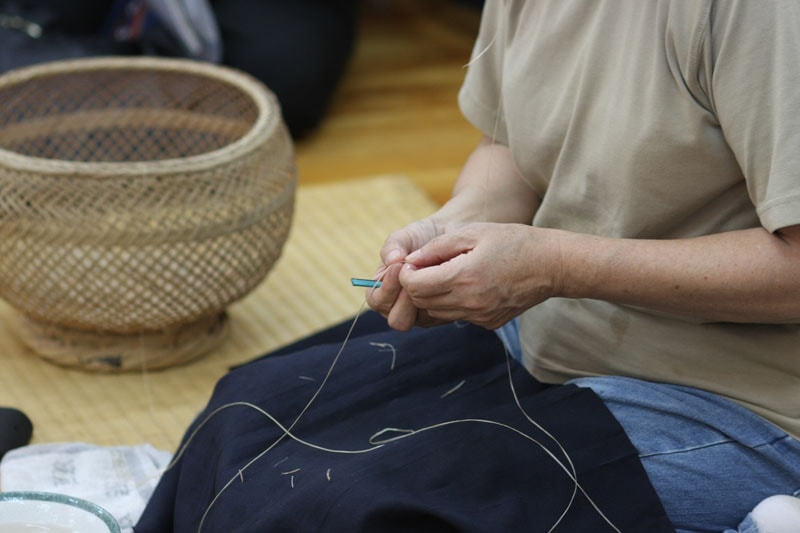
Ply-joining: They are tied together in a weaver’s knot, cutting excess fiber with a razor blade.
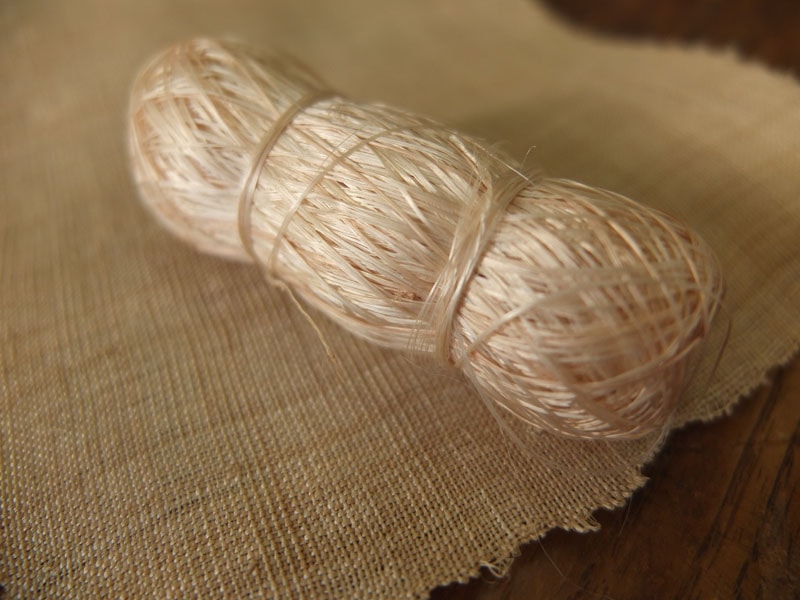
Basho thread and cloth
《 Lotus 》
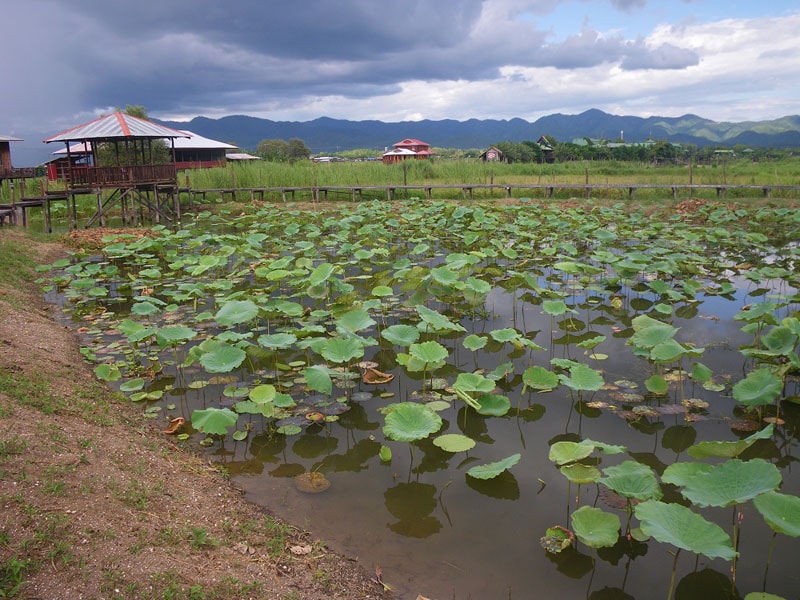
〔 Nymphaeaceae family 〕
Binomial name: Nelumbo nucifera
Producing area: Inle Lake, Myanmar
Section used: Petiole
Ply-joining method: Twisting
The way this fiber is “twisted” is slightly different to how others are.
Countless fibers are pulled out from several petioles, all twisted together into one bundle.
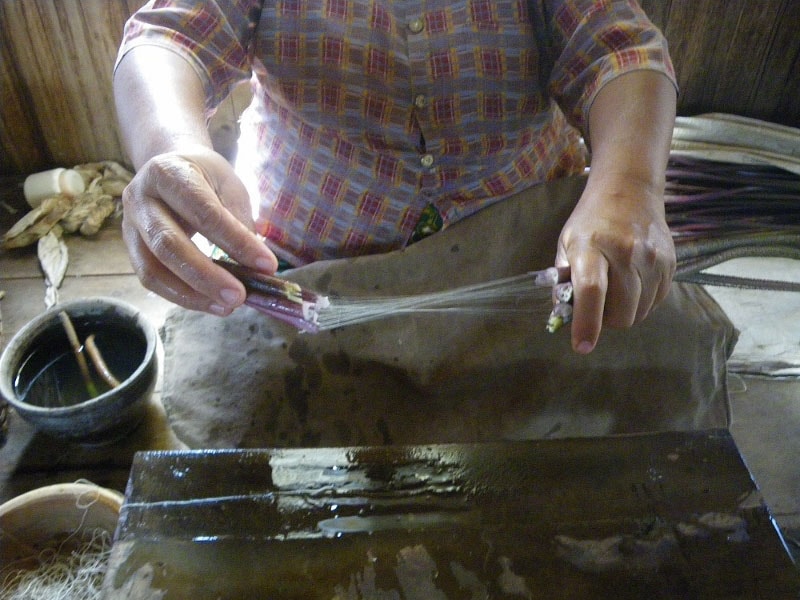
Fiber taken out from the lotus petiole.
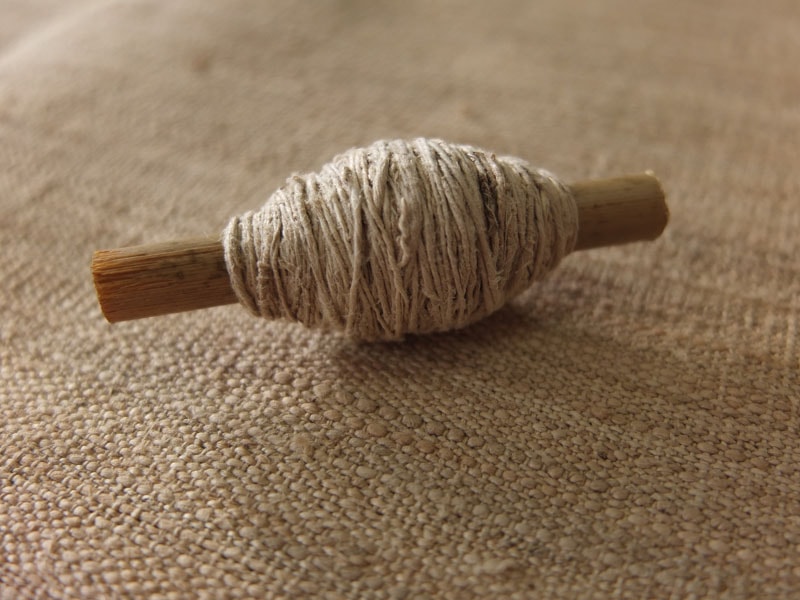
Lotus thread and cloth.
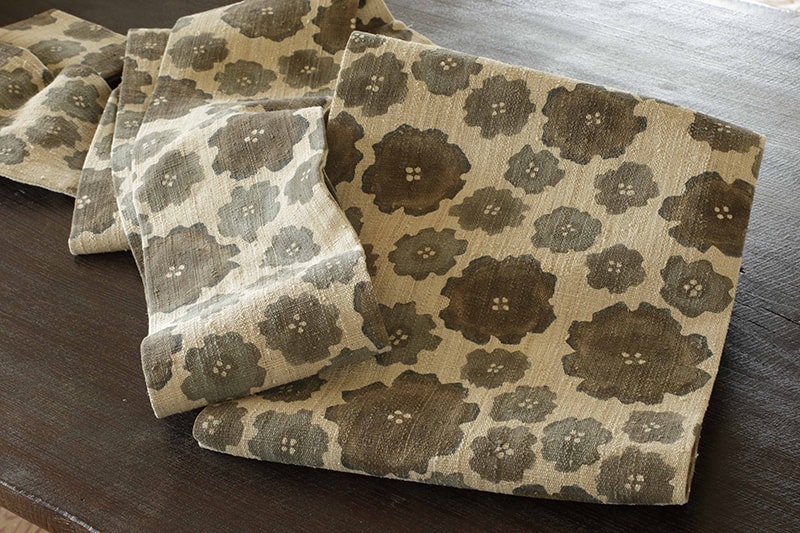
Stensil-dyed Obi / Made by: Chieko Tsuda / Photo: Makoto Ebisu
《 Kudzu (East Asian Arrowroot) 》
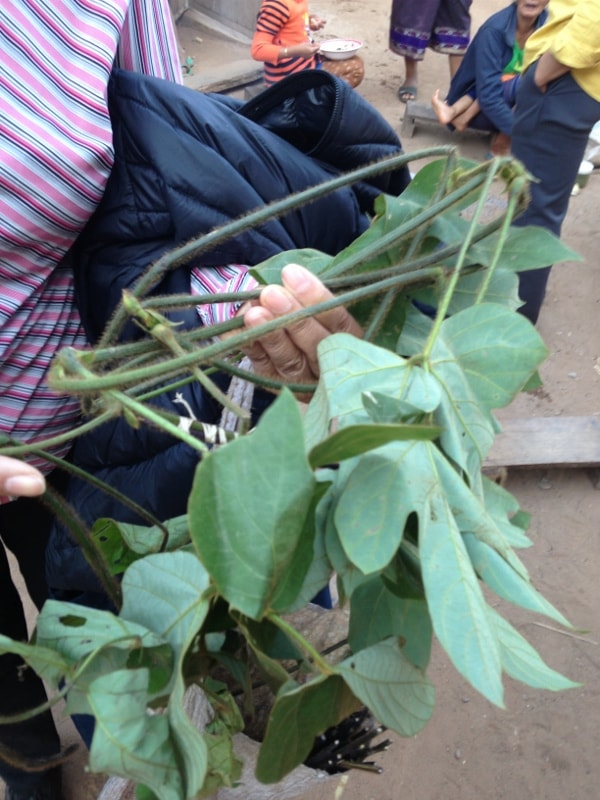
〔 Fabaceae family 〕
Binomial name: Pueraria montana var. Lobata
Producing area: Laos
Section used: Bast fiber
Ply-joining method: Twisting
It is a strong that can be used for warping as well.
They don’t have any fuzz, so locally they use old-fashioned looms without applying starch on them. It is a glossy and flexible, beautiful.
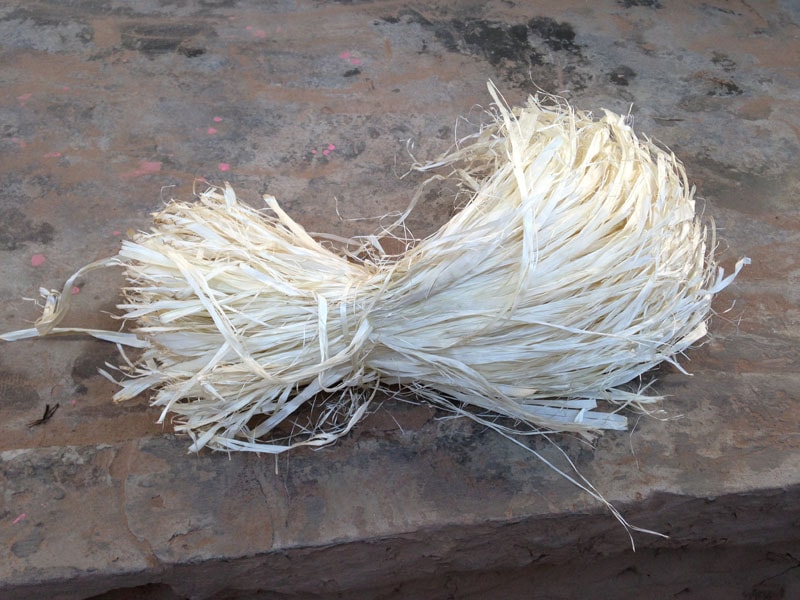
Kudzu fiber
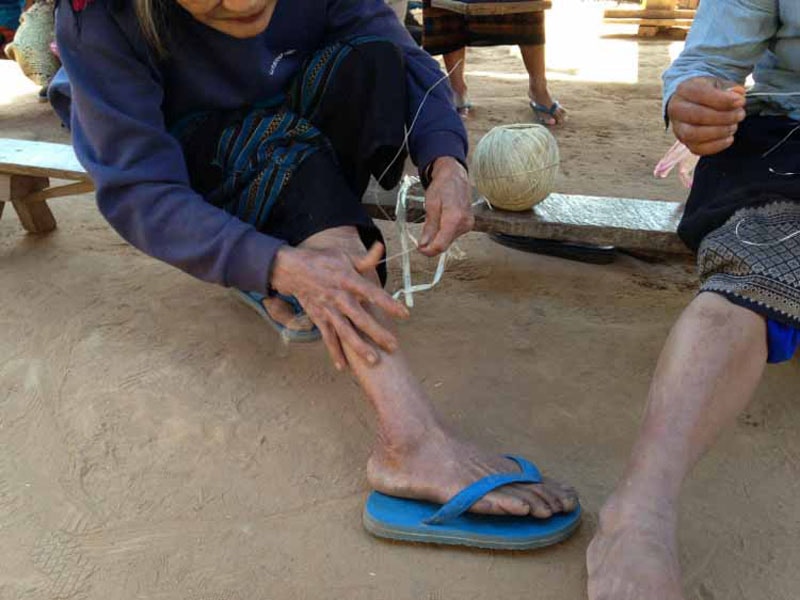
Ply-joining: They join the kudzu fiber by using their shin and twisting.
[Video] Kudzu ply-joining
[Video] Warping using a stick backstrap loom
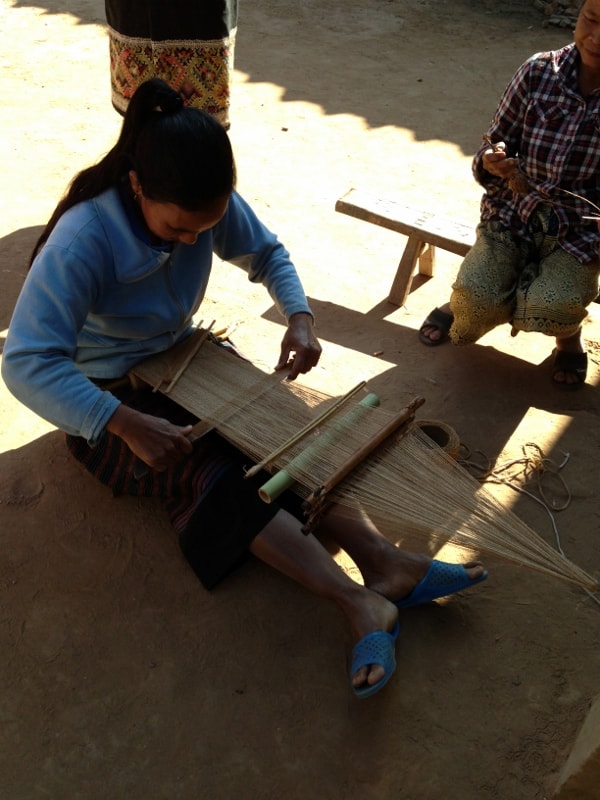
Stick backstrap loom
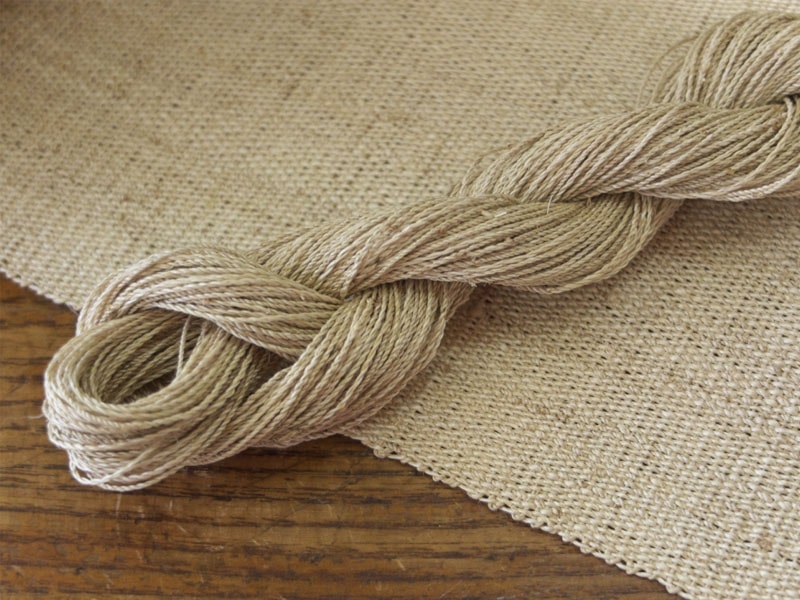
Kudzu thread and cloth
《 Linden 》
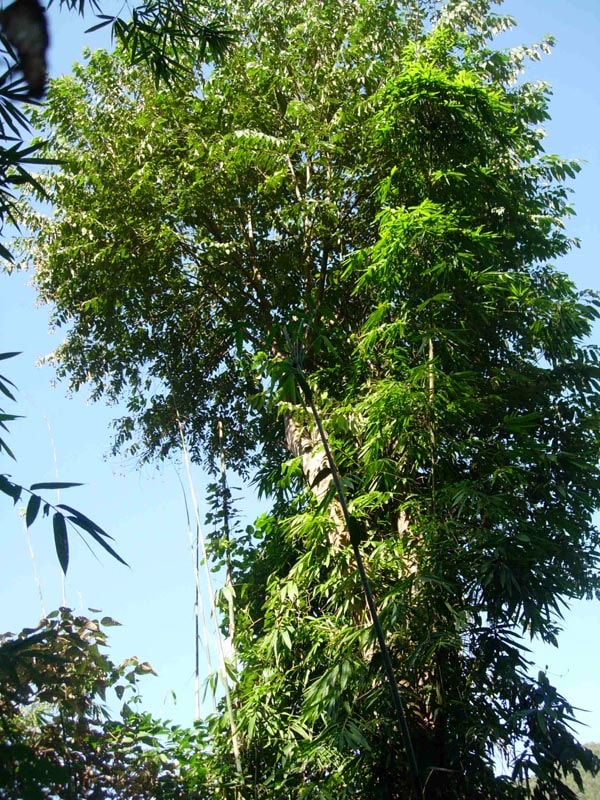
〔 Tiliaceae family 〕
Binomial name: Tilia japonica
Producing area: Laos
Section used: Bast fiber (the female plant is brown, while the male plant is white)
Ply-joining method: Twisting
Despite the Japanese linden fiber being known for turning brown after boiling in lye, the Lao linden fiber is already brown from the beginning.
Our interests will never end in the many wonders of the plant world.
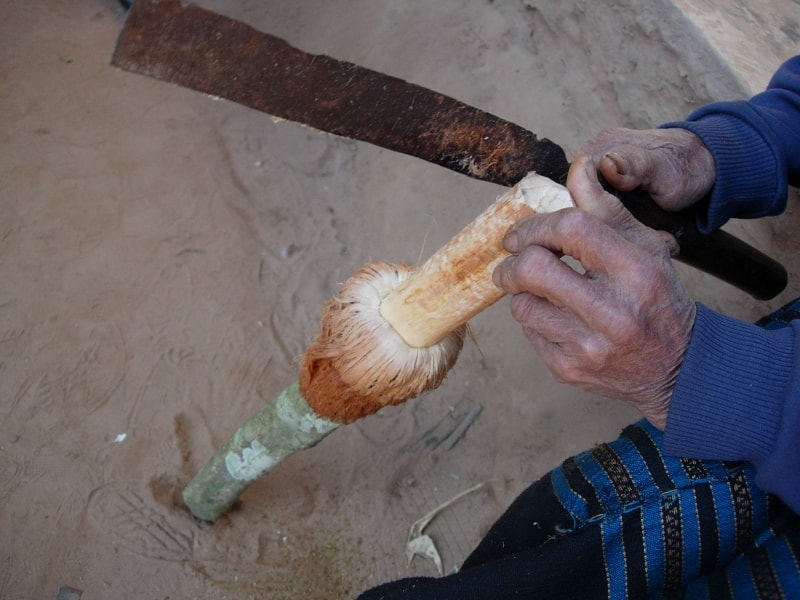
The fiber being torn off with a billhook
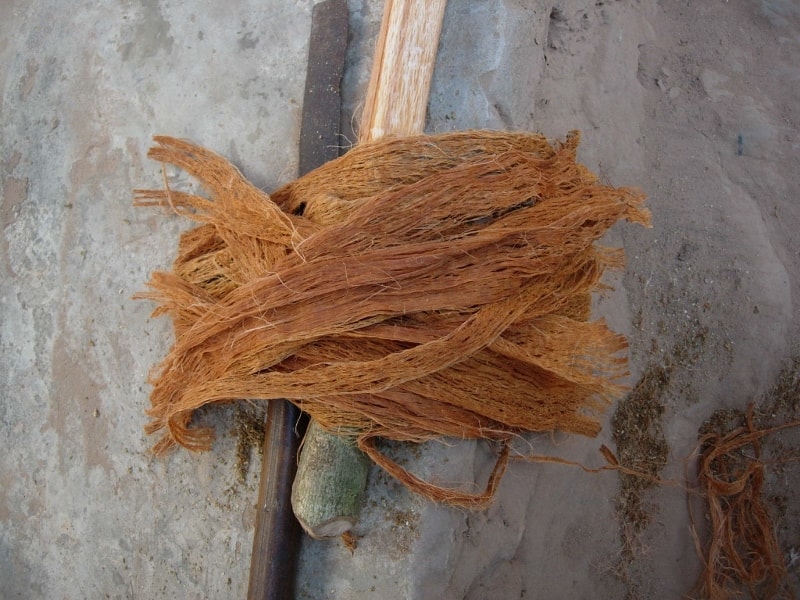
The taken out fiber
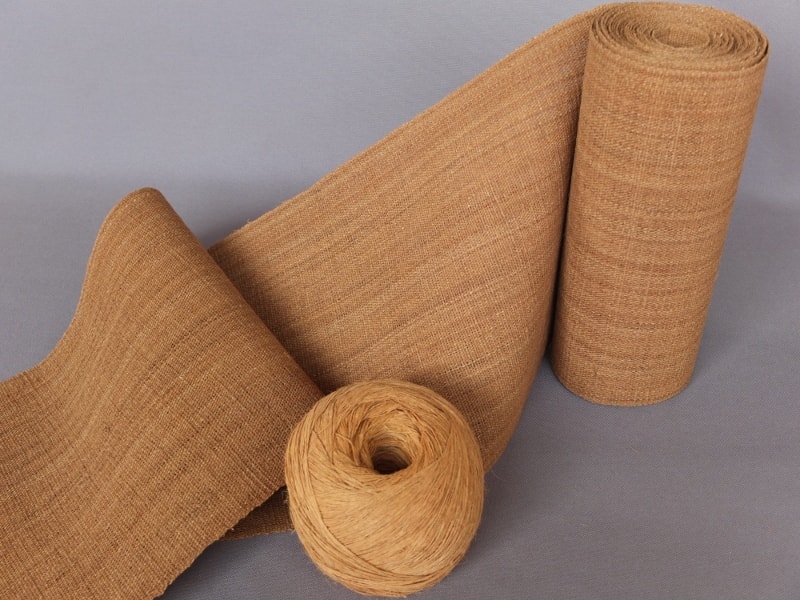
Linden thread and cloth
《 Paper Mulberry 》
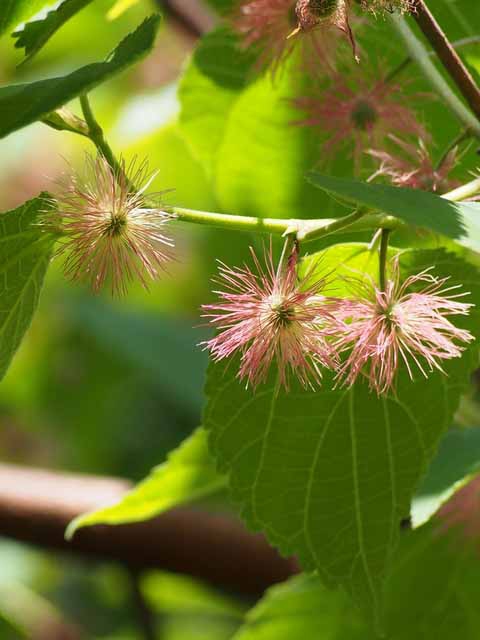
〔 Moraceae family 〕
Binomial name: Broussonetia Kazinoki
Producing area: Shandong, China
Section used: Bast fiber
Ply-joining method: Twisting
Despite now being known as a raw material for papermaking, during ancient times it was the material for weaving cloth (Yuu).
The “Tafu” cloth of Kito, Tokushima prefecture carries on its legacy today.
It is a fiber similar to wisteria.
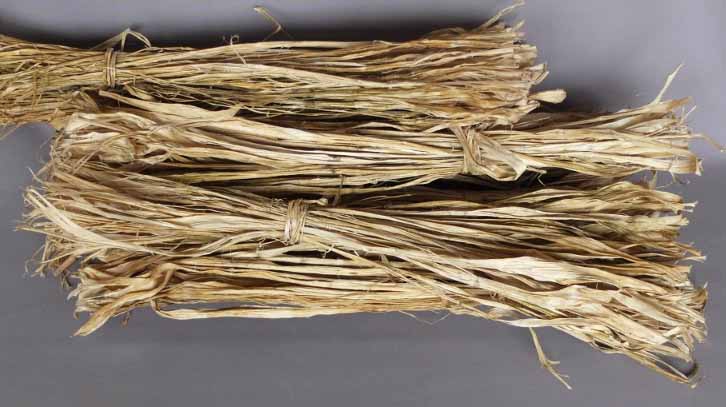
Paper mulberry fiber
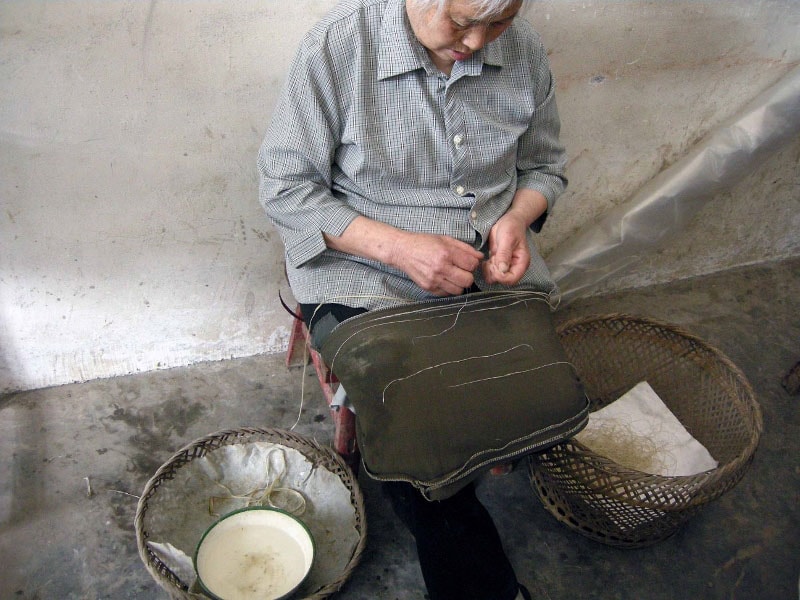
Ply-joining: The fiber is splitted into thin strips and then joined together
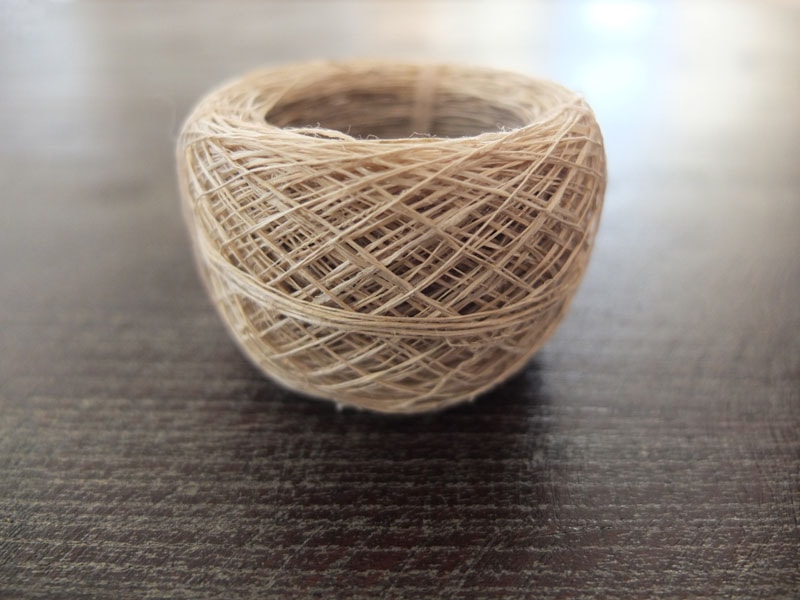
Paper mulberry thread